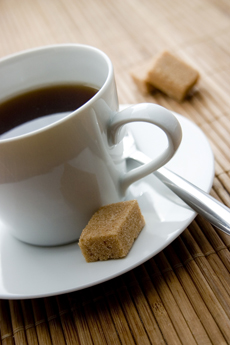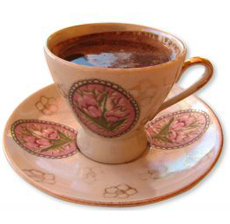Coffee Glossary: A Glossary Of The Different Coffee TypesPage 6: Terms Beginning With R To Z This is Page 6 of an 6-page article. Click on the red links below to visit other pages. This glossary is protected by copyright and cannot be reproduced in whole or part. You are welcome to link to it.
|
 Have a fresh cup! Photo © Julien Bastide | Dreamstime. Have a fresh cup! Photo © Julien Bastide | Dreamstime. |
|
|
RANCID: Since coffee beans are high in fats, the fats can go rancid, like any other oil. They will smell rancid. |
||
| RICH: Coffee with depth and complexity of flavor, full body, and an overall satisfying taste. |
||
| RIO:
An iodine aroma or flavor caused by a bacteria that attacks the coffee. It used to be prevalent in coffees from Brazil, hence the descriptor. The application of heat applied to green coffee beans for the purpose of developing certain flavor characteristics: the darker the roast, the heavier the flavor. In order, the degree of roasts recognized by the National Coffee Association, are:
|
||
|
ROBUSTA: Coffea robusta typically grows in hotter and more humid areas at lower altitudes, around 600 to 1500 feet. It produces a coffee that has less fine, less nuanced qualifies than Coffea arabica, grown at higher altitudes. |
||
|
ROUGH: Characterized by a parched, dry sensation on the tongue, related to sharp, salty taste sensations. Usually the result of lower-grown coffee. RUBBERY: |
||
|
SHADE-GROWN COFFEE: SMOOTH: SOFT: SOFT BEAN: |
||
| SOUR: A puckery, astringent taste that is drying in the mouth due to poor coffee processing. |
||
| SPARKLING: Bright acidity that dances on the tongue before quickly dissipating—the coffee version of Champagne bubbles. SPICY: STALE: STRAW: STEWED: STRENGTH: SUPREMO: SWEET: SYRUPY: THIN: TONE :
|
||
| TURKISH COFFEE: A strong, sugared, silty beverage made from coffee ground extra-fine into a powder almost the consistency of flour. It is made with an equal ratio of coffee and sugar in a special pot called an ibriq, boiled and removed from the heat 3 times to achieve a thick beverage with a distinctive taste that is served with the grounds. This method is the same as used to make Greek coffee. When coffee traveled north to Austria, the Viennese invented the process of filtering coffee. VARIETAL: |
 Turkish coffee. Photo by Eyup Salman | SXC. |
|
| VIENNESE COFFEE: Coffee incorporating semisweet chocolate and heavy cream, beaten until frothy and topped with whipped cream. It can be spiced with cloves and cinnamon. |
||
| VIENNA or VIENNESE ROAST:
A roast slightly darker than an American Roast. Some of the chestnut-colored beans have oil on the surface, some are dry. The sugar in the beans are caramelized, and the flavor is balanced in terms of acidity, aroma, body and varietal flavor characteristics. |
||
| WHOLE BEAN: Coffee that has been roasted but not ground. |
||
| WILD: Exotic-flavored coffees with extreme characteristics. |
||
| WINEY or WINY: A term used to describe some coffees that are full-bodied, smooth yet lively—similar to a mature red wine. |
||
| WOODY: The aroma and flavor of wood—think old pine or plywood—and a very dry mouthfeel. Generally a negative quality of old coffee—see past crop—although some coffees, e.g. from Yemen and Sumatra, have a touch of woodiness as part of their natural flavor profile.
|
||
Last Updated May 2018
© Copyright 2005-2025 Lifestyle Direct, Inc. All rights reserved. All images are copyrighted to their respective owners.